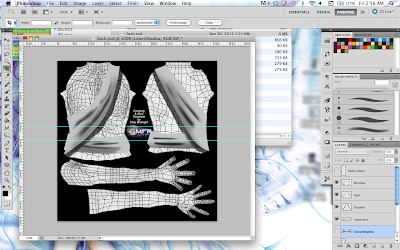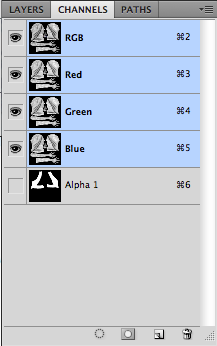1. Title: Project Niche
2. The Big Idea: Virtual clubhouses for niche groups.
3. Target member: Project Niche would be aimed at primarily at people who would like to be part of some kind of group or community, but whose physical location limits or prevents them from doing. Whether it’s amateur writers looking for a group to join or artists looking for criticism, Project Niche is a series of virtual rooms, or ‘clubhouses’, which cater specifically to groups.
Since there are almost as many niche audiences as there are stars in the sky, Project Niche should therefore cater to as many different types as possible, making the service easy to use yet useful to the more advanced individuals. Among other things, computer ramifications would have to be pretty low; a basic graphics card and access to some moderate-speed internet would be necessary, but as long as you weren’t trying this on a 1995 computer with dial-up, you should be good.
I’m especially targeting people who are, on whatever basis, isolated by circumstance – perhaps individuals who cannot easily leave their homes, or whose tastes are not widely shared by people in their own physical environments. These might include anyone from artists who live in a primarily non-artistic community to persons with a flair for bondage who would like to meet others who share their particular tastes.
4. Value Proposition: Project Niche’s target members are people who need to overcome the physical limitations of actual distance, or possibly social insecurities. They need to feel that they are interacting with other people, whether as a themselves or as a virtual character, not just engaging in a glorified chat program, and find real social rapport and feedback from virtual friends and acquaintances.*
5. World Design Feature Categories:
a. Self: Since the point of this virtual space is to bring people with similar goals and interests together, the Personal avatars would be customizable, but not terribly so. The available avatar customization options would be limited to pallets and instruments available in real life (in other words, no blue hair or purple skin). Costume options would be available as accessories, but these would not be native to the characters and therefore “removed” in locations where costumes weren’t allowed (a costume would be distinct from “normal attire”, which would default in the event of such a removal). In order to further emphasize connection, most action would take place in first person to de-emphasize the avatar as an accessory and emphasize its role as bringing you, the user, to other users.
b. Place: The clubhouses, on the other hand, would be highly customizable spaces intended to serve the needs of their users. Writers could meet in a pub, or on top of Mt. Vesuvius. Painters could share their artwork in the penthouse suites of skyscrapers. For clubs that would want to host public events, auditoriums, theatres and other types of locations would also be made available.
At their most basic, these would consist of a ‘sky’ background (which may also include a cityscape or a plane below, depending on the setting), along with a “room” (navigable space) where the avatars could mull around as they met. The size, contents and other elements would be left to the owners – One could, for instance, meet in a space designed to look like a cloud-bank with the ‘world’ miles beneath them. The in-game economy would emphasize room customization over avatar pimping.
c. Purpose: Project Niche’s primary purpose is to give its users a means to connect with each other and express themselves about various specific issues, ranging from the mainstream to the obscure and even strange. Project Niche is a place for people to find other people who share their interests along with finding ways of showing one’s work or skill and gaining feedback in a more intimate, personal way than the average hosting website.
In addition to navigating virtual spaces, whether by manually moving the avatar or ‘zipping’ over to a pre-defined location, other features would be added to smooth out the experience. Under certain conditions, club admins could implement a “rating system” when appropriate, and allow members to rate each other based on certain criteria. “Projection Boards” could also be added to display works to group members, whether video or still, in the style of a slide show or home movie scenario. Distribution systems would also come into play, including a special message system that, not unlike email, could forward material to the user in question.
d. Fun Things To Do: User-created events would make up the majority of the in-world entertainment. These might involve plays put on by play-houses, public art-galleries, adventure settings that combined multiple or expanded singular clubhouses. Plays and concerts could also set visitors to ‘invisible’, thus making allowing users to actually get whatever kind of view they want, all the while without actually bothering anyone or wrecking the experience for anyone else.
For more interactive experiences, group games would also have a place. There would be some various ‘default’ games (like card games, board games and sports), but naturally there would also be room for clever programmers to insert their own material. User-implemented programs would, however, require system approval that could be granted and revoked by the Sys Admin in advance.
e. Society: There would, of course, be a very strong distinction between groups to keep things safe and sane for the various users. A filter option, for instance, would be made available to users who wished to censor swear words in text, along with a supplementary customization option that could also filter words and subject of the user’s choosing. (For example, if the user had an irrational fear of ladybugs, he could choose to censor all permutations of the words “Lady”, “bug”, “Ladybug” and “James and the Giant Peach”, to name a few.)
Individuals wishing to join a club would need to obtain permission to join from the club’s head. Clubs would otherwise be closed to the public when they are not hosting “open-house” style events or have invited Guest users inside. In the event of misconduct, the administrator of a club could simply ‘bar’ that user. If a user is barred from a club, they will not be able to return, receive notices from or see works created/posted by the club as a while, nor will the club be able to perceive him as such.
Additionally, individual users may ‘bar’ one another, each becoming invisible to the other, and everything associated with the other will be locked for them (including forum posts, events, uploads etc.). This is a bit more exclusive than simply being barred from a group, since as long as the bar remains intact, all of one user’s data will become inaccessible to the other. Communications will be entirely severed in-game until such time as the one who established the bar removes it.
In addition, club admins may choose to “ban” a member of their club from the group. Banning a member does not necessarily invoke the same ramifications as “barring”, but it is a right that resides with the administrator(s) exclusively to effectively force a member out. (Once banned, a former member goes back to being an average user and may be re-accepted.) Rules may vary from club to club, and it is partially the administrator’s duty to choose and enforce the rules as the club needs.
A Form of in-game currency, labeled GS (Gold Standard) would be implemented, such that users could charge for creations, admission, and other in-world products and services. Currency exchange would also be made available.
6. World Design Plan –* The world itself would be jointly constructed from various Niches, which would act as club rooms. These would be mostly private, but any could become open to the public at the group’s discretion. Additionally, there would be communal areas wherein users could meet, congregate and observe advertising for virtual events. The individual niches would not be constrained by any particular shape, being entirely created to suit the needs of the group. Some sort of surreal addition would be made to emphasize the separation of the private from the public. Some performances would be made public in a fashion, but only the club members within would be visible to the users, and communication could take place between the unseen visitors, but never between the visitors and the performers. Notes would be left, much like with a sign-in sheet, that would only become accessible following the performance.
7. Interface Components – * The interface would be largely menu-based, with minimal floating on the HUD. The idea would be to, hopefully, emulate the nature of the real-life, wherein the HUD does not exist at all. Chats would take place at the bottom of the screen, pull-down menus would descend from the top. Hopefully this would lead to an uncluttered screen, emulating the feel of real life as much as possible.
Certain elements, however, would be inevitable, and not for the worse. A rating system to review others’ work or performance, the option to “record” meetings from the user’s perspective, and, of course, the requisite screencap feature would be offered. A file distribution service would also come into play, as well as the ability to “project” visuals onto a projector-like surface, be it text, images or footage.
8. Out-World Components – * Project Niche’s website would give the user the option to experience it in the usual way – that is, with menus and sidebars and scrolling text. However, several options to customize this experience would be offered, such as displaying Niches as books in a library or doors in a hallway. These could be further categorized to reflect the nature of the club, and perhaps even unique takes on this interface could be provided by the users.
9. Research –
Virtual Worlds:
- IMVU – Conceptually speaking, this is closer to what I’m trying to create. Certainly the space creation format is there, and the chat rooms are pretty spot-on. However, the entire format seems pretty flawed – one ‘teleports’ from place to place within the rooms, and cannot walk around at all. Another problem is that there is no ‘link’ between the areas, at least not enough that it feels like a real world, let alone a place to connect with others. For example, one literally ‘selects’ a room from a list like choosing a video on youtube – not terribly exciting or organic. At the end of the day, it really is just a chat room with extra bling.
- Second Life – The limitations of space – and the difficulty of actually creating an organized event – limit this kind of thing within second-life proper. While “poses” and locations can make things more organic, the sheer size of the location makes everything pretty tricky. It’s a lot closer than IMVU, but it’s far easier to meet people spontaneously, not intentionally.
- DeviantArt: A good starting-place and definitely the most iconic when it comes to artistic reviews, Deviant Art formed the basis of my review system. It’s wide range of user-provided media and general lack of pretence made it an ideal model for Project Niche’s demeanor.
* See the visuals in the attached presentation for more details, found here.














